 Your new post is loading...
 Your new post is loading...

|
Rescooped by
Romain
from Newsletter navale
January 22, 2015 2:31 AM
|
Beijing denies report, calls it an 'out-and-out fabrication' Namibia and China are discussing plans for a Chinese naval base in the southwest African country, the Namibian newspaper reported Tuesday, prompting an immediate denial from Beijing. The Namibian quoted a confidential letter from Namibia's Beijing ambassador to his foreign ministry stating that a Chinese delegation would visit Windhoek for discussions "on the way forward regarding plans for the proposed naval base in Walvis Bay”. The letter from Ambassador Ringo Abed to foreign affairs permanent secretary Selma Ashipala-Musavyi, dated December 22, 2014, followed a meeting he had with Chinese defense ministry official Geng Yansheng, the Namibian said. The detailed letter said the Chinese delegation would include technical staff and naval architects who would do an exploratory feasibility study, the newspaper reported. In response to a query, the Chinese defense ministry told AFP that "the exchange of communication between Chinese defense officials and Namibian embassy officials reported by 'The Namibian' is an out-and-out fabrication". Namibia's Foreign Affairs Minister Netumbo Nandi-Ndaitwah, who was sent a copy of the letter, said: "The whole issue is completely new to me. I'm seeing this letter for the first time." The ambassador's letter said Geng Yansheng had noted that China had invested heavily in Namibia and that a Chinese naval presence would deter illegal fishing trawlers and smugglers in Namibian waters, the paper reported. "Other considerations for the naval base would be for it to serve to train the Namibian navy, not only to be combat ready but to carry out civilian duties as well," the Nambian quoted the letter as saying. This is the second time Beijing has denied reports of a planned naval base in Walvis Bay, which has a sheltered deep water harbor and is Namibia's biggest commercial port. The desert nation on the Atlantic coast to the north of South Africa is mineral-rich -- from diamonds to uranium -- and China has increased investment and aid in recent years. (AFP)
Via Patrick H.

|
Rescooped by
Romain
from Newsletter navale
December 4, 2014 7:48 AM
|
Greek government has sold air-cushioned landing craft Zubr-class to China. The Zubr-class (Project 1232.2 class, NATO reporting name Pomornik) is a class of air-cushioned landing craft of Soviet design. This class of military hovercraft is, as of 2012, the world’s largest hovercraft. It is designed to sealift landing assault units (such as marines or tanks) from equipped/non-equipped vessels to non-equipped shore, as well as transport and plant mines. There are currently nine ships in active service in the world. The Zubr is used by the Russian, Ukrainian, and Greek navies. The transfer of the Kefalonia (L- 180), the first of two Zubr hovercraft purchased by Greece, to the Hellenic Navy marked the first time that a Russian-made ship was purchased by the navy of a NATO member. Hellenic Navy, which operates four ships. Three vessels were commissioned in 2001: the Kefalonia (L180) was purchased used from the Russian Navy and upgraded, the Ithaki (L181) which was completed in Ukraine, and the Zakynthos (L183) which was built in Russia. A fourth vessel, the Kerkyra (L182), was launched in June 2004 at St. Petersburg yard and was commissioned in January 2005. HS Kefalonia (L180) – ex Russian Navy 717, commissioned 2001
HS Ithaki (L181) – hull launched in Ukraine 1992, commissioned 2001
HS Kerkyra (L182)
HS Zakynthos (L183) Series vehicles ” bison ” are made only in Feodosia in the Bureau ” Almaz ” (St. Petersburg), they are designed for landing on unequipped coast and its fire support. The ship can carry 3 main tank weighing up to 150 tons or 10 armored personnel carriers and 140 troopers. 1st large amphibious Ship project ” bison ” bison ” in the Ukrainian classification) built in 2013 by order of China in Feodosia shipbuilding shipyard Sea in the Ukrainian part of order 4 is similar to the hovercraft. The ship was …read more
Via Patrick H.

|
Rescooped by
Romain
from Newsletter navale
November 12, 2014 1:02 PM
|
A cruise missile designed to be launched from attack submarines was unveiled today at Airshow China. The new missile, designated CM-708UNA, was developed by Aerospace Science and Industry Corporation (CASIC). Company sources confirmed the missile has entered production. The CM-708UNA is launched by torpedo tube and is therefore adaptable to conventional submarines (not equipped with vertical launchers). The missile employs an inertial navigation and satellite navigation for mid-course guidance, using a radar seeker for terminal homing. The missile is powered by a rocket boosted turbojet engine carrying the missile to a range of 128 km. Chinese submarines are already equipped with Ying Ji (C-801) submarine launched anti-ship missiles, which have also been exported to Pakistan. These missiles have a range of up to 42 km.
Via Patrick H.

|
Rescooped by
Romain
from Newsletter navale
September 12, 2014 4:06 AM
|
China has shown off the People's Liberation Army's latest hardware on primetime state television, an advanced short-range missile defence system said to have a “high success rate” destroying incoming missiles and aircraft. The Hongqi-10 (Reg Flag 10) surface-to-air missile was shown in China Central Television's evening news bulletin Wednesday being fired from ships and land-based mobile launchers, and exploding in the sky on impact with its target. It will protect warships against rockets over a limited area, and will be used alongside an “area defence system” which covers a larger area but has a slower response time, the state-run Global Times newspaper said Thursday. “As a naval point defence missile system, HongQi-10 boasts a particularly quick response to low-altitude missiles that area defence systems fail to intercept,” it quoted Lan Yun, deputy chief editor of monthly journal Modern Ships, as saying. It cited him adding that it had a high success rate in hitting its targets. Incoming missiles only 1.5-10 metres above sea level can be targeted with the new system, which takes only 10 seconds to launch, Lan said. The missiles can also used to protect ground forces from air attacks by ”jets, unmanned aerial vehicles and cruise missiles”, the Global Times report said, citing an expert. The Hongqi-10, whose export version is known as FL-3000N, has been installed on some of China's most advanced warships including the 1,300-tonne Type 056 frigates and 7,000-tonne Type 052D destroyers, Chinese media have reported. Beijing has been increasing its military might and naval reach in recent years, and President Xi Jinping regularly urges the country to strengthen its ability to “win battles”.
Via Patrick H.

|
Rescooped by
Romain
from Newsletter navale
August 18, 2014 9:05 AM
|
Hudong-Zhonghua Shipbuilding, a wholly owned subsidiary of China State Shipbuilding Corporation (CSSC, the largest shipbuilding group in China) launched the first C28A Corvette on order for the Algerian Navy on August 16 2014. Algeria signed a contract with China Shipbuilding Trading Co (CSTC) for construction of three C28A corvettes in March 2012. CSTC representatives at DSA 2014 explained to Navy Recognition that the ship would be about 120 meters in length, a breadth of 14.4 meters and a draft of 3.87 meters for a displacement of about 2880 tons.
The three corvettes currently being built at a shipyard located near Shanghai will receive a mix of Chinese and Western systems. The hull mounted sonar will be of Chinese origin, but Algeria has selected Thales Smart-S Mk2 3D air and surface surveillance radar and Kelvin Hughes for the navigation radar. According to the CSTC representatives, the weapons fit will be of Chinese origin exclusively and will consist in:
- A single barreled 76mm main gun
- 8x C802 anti-ship missiles
- 1x FM90N launcher with 8x surface to air missiles
- 2x Type 730 CIWS located on top of the helicopter hangar
The corvette has some stealth attributes, such as the exhaust gases funnels located right on the water line on the sides of the hull in order to reduce its IR signature. Delivery of the first C28A Corvette to the Algerian Navy is expected for May 2015.
Via Patrick H.

|
Rescooped by
Romain
from Newsletter navale
May 5, 2014 5:14 AM
|
China has announced that it plans to hold joint naval exercises with Russia, and although both nations frequently co-operate militarily, some analysts believe that these drills could have deeper implications. The Chinese government has said that these drills are aimed at strengthening military cooperation between the two countries. In what many believe is a response to recent Western foreign policy maneuvers that have angered both Moscow and Beijing, these recent exercises will be held in disputed waters of the East China Sea between Japan and China. Near Shanghai, these waters are adjacent to a set of uninhabited yet disputed islands. Both Japan and China claim that the Diaoyu (as they are called in China) or Senkakus Islands (as they are called in Japan) are rightfully their own. Recently in a trip to Asia, President Obama reaffirmed his commitment to Japan’s interests in the dispute. This move has been rebuked by China as inflammatory. As it stands now, the Islands are under Japanese jurisdiction. On top of this, China surprised its Asian neighbors and the West by redrawing its air defense identification zone last year. Now, this zone covers the disputed islands which has Japan, South Korea, and the United States worried. On top of that, China has been rapidly increasing its military spending while also sending more and more patrols into the region. Now, with China and Russia planning to hold joint naval exercises later this year, there are renewed concerns that the strengthening of their military cooperation may be for the purpose of standing in solidarity against some the West’s current foreign policies. And with the current standoff between the West and East over a range of issues, there is ample room to worry about a continual cooling of relations. As it stands now, the most pressing issue is the current Ukraine Crisis. Russia has found itself on the receiving end of economic sanctions, diplomatic pressures, and an expanding NATO force on its doorstep in response to its handling of the crisis. Although Russia denies involvement, the West claims that Moscow is behind the unrest in the region. For its part, China has remained tepid in commenting on Ukraine. However, the announcement to hold these new drills may perhaps be seen as a way to affirm Russia that China will remain in solidarity with its ally. Accordingly, China has not explicitly supported or denied these speculative claims, only saying that these drills are normal for the two nations and that they are meant to serve as a pragmatic way for their navies to “improve their capability.” That being said, there can be no denying that these joint naval exercises between China and Russia hold more than just practical military applications in mind. It is likely that these drills are planned to explicitly send a message to the West that both nations stand aligned against some of the foreign policy measures that have been exercised lately. Although it is not unusual for the two nations which have strong economic, political, and military ties to perform such drills, many argue that the timing of them is particularly pointed.
Via Patrick H.

|
Rescooped by
Romain
from Newsletter navale
April 25, 2014 4:08 AM
|
China's first aircraft carrier, the Liaoning, returned to Dalian Shipyard dock to undergo its first interim service on April, 17, 2014.
Experts predicted that the service will last for six months; comprehensive overhaul and maintenance will be conducted on the power, weapons, and other systems. Complex weapon systems require regular maintenance, and aircraft personnel also need to be trained and rest to maintain combat effectiveness.
The Liaoning formally entered into service with the Chinese navy in September 2012. Prior to this, ten sea trials had been conducted. In August 2013 the Liaoning returned to Dalian port to resolve problems identified during test sailings and pilot training. However, this time the maintenance work will include the replacement of certain large parts.
The Liaoning did not take part in the multinational joint maritime exercise held yesterday in Qingdao.
Via Patrick H.

|
Rescooped by
Romain
from Newsletter navale
March 26, 2014 5:03 AM
|
The B-585 Sankt Peterburg, Russia's first and only completed Lada-class submarine. (Internet photo) Instead of providing the older Lada-class submarines to the People's Liberation Army Navy as requested by Beijing, Russia's president, Vladimir Putin, will likely authorize China to receive the more advanced Kalina-class submarine, reports the Voice of Russia, citing Vassily Kashin, a senior research fellow from the Moscow-based Center for Analysis of Strategies and Technologies. Viktor Chirkov, the commander-in-chief of the Russian Navy, officially announced that the Kalina-class conventional submarine equipped with an advanced air-independent propulsion system will be developed and produced in the future on Mar. 20. "Russia is currently designing a fifth-generation conventional submarine, dubbed Project Kalina, which will be fitted with an air-independent propulsion (AIP) system," said Chirkov. Authorities also declared that the construction of the older Lada-class submarine will be cancelled. The Lada-class, or Project 677, is a fourth-generation diesel-electric submarine based on the older Kilo-class submarine. China was negotiating with Russia to purchase four Lada-class submarines from the Rubin Design Bureau based in St Petersburg. China hoped those submarines could be refitted with Chinese engines and an electronic fire-control system, according to the Canada-based Kanwa Defense Review. As Russia remains isolated over its intervention in the Ukraine crisis, Moscow values China's position as one of its strategic partners, Kashin said. He added that the PLA Navy will benefit from the cancellation of the Lada-class as it will open a new door for China to gain more advanced technology from Russia to build its own submarine in the future. Meanwhile, China may be able to design its own fifth-generation conventional submarine with the help of Russia under this new concept, Kashin said.
Via Patrick H.

|
Rescooped by
Romain
from Newsletter navale
January 13, 2014 4:59 AM
|
The United States Navy kept a close eye on the recent sea trials conducted in the South China Sea by the Liaoning, China's first aircraft carrier, according to a report published on US military affairs website Strategy Page. The Liaoning and its escort group of two Type 051C destroyers, two Type 054A frigates and a supply ship, returned to base on Jan. 1 after 37 days at sea, with state media declaring it a successful sea trial the next day. The Xinhua news agency said the carrier "attained the anticipated objectives," including testing its combat system and conducting a formation practice. All tests and training programs went well, as scheduled, it said. The Jan. 7 Strategy Page report claimed that the final month of Liaoning's seal trials were particularly important to the US Navy as the aircraft carrier was operating as part of a task force on the high seas for the first time. "There were some days of bad weather and how well the Chinese ships performed under these adverse conditions was a good indicator of how effective the Liaoning task force would be in combat," the article said. To monitor the Liaoning's task force during the sea trials, the US Navy employed aircraft, satellites and submarines, the report claimed, adding that it was also important to observe all activities from the surface using the USS Cowpens, a Ticonderoga-class guided missile cruiser which was confronted by the PLA Navy. On Dec. 5, one of the Liaoning's escort ships cut in front of the USS Cowpens while it was observing the carrier from a distance of 40 kilometers, a move that was condemned by US officials as a "dangerous maneuver."
Via Patrick H.

|
Rescooped by
Romain
from Newsletter navale
December 17, 2013 12:23 PM
|
The first Zubr (project 1232.2) amphibious hovercraft locally built in China is almost complete, as can be seen on a picture that recently emmerged on the Chinese internet. The Chinese Navy has placed an order for four landing craft at a reported cost of 315 million US dollars. Two were built by Feodosiya shipbuilding company and already delivered, and a second pair of vessels are being built in China under the supervision of Ukrainian technicians. Currently the world’s largest hovercraft, development of Zubr landing ships started in the USSR in 1978, and the first serial ship joined Soviet Navy in 1988. Its carrying capacity is 3 main battle tanks with overall mass of 150 tons or 10 armored personnel carriers weighing up to 131 tons plus 140 marines, or 8 infantry fighting vehicles with mass up to 115 tons. If not carrying armor, Zubr is capable to accommodate 366 men.
In total, 14 Zubr-class ships have been launched; only two of them remain in inventory of Russian Navy. Five ships were decommissioned , two uncompleted, and five sold to Greece for the Hellenic Navy and where they are generally used in support of Special Forces. With the recent Chinese order, the total of Zubr-class ships to have been launched will reach 18.
Taiwan and its allies are concerned that these platforms may be used as part of Chinese offensive against Taiwan. According to sources, the banner displayed at the back of the Chinese built Zubr translates into "Reuniting the Motherland".
Via Patrick H.

|
Rescooped by
Romain
from Newsletter navale
December 11, 2013 5:36 AM
|
China will construct two conventionally powered aircraft carriers in Dalian and Shanghai between 2014 and 2015, a source from China's Central Military Commission has told Duowei News, an outlet run by overseas Chinese. Under the Commission's Project 048, China aims to establish three carrier battle groups by 2020 so that all three major fleets of the PLA Navy will be able to carry out missions with the full support of an aircraft carrier. The two new Type 001A indigenous carriers will be updated versions of China's first aircraft carrier, the Liaoning, which was originally a Soviet-era Admiral Kuznetsov-class aircraft carrier purchased from Ukraine in 1998. They will also likely be designed with a ski-jump ramp, according to Duowei. Sources said that the General Equipment Department of the PLA has already signed a contract with the Beijing-based China Shipbuilding Industry Corporation to build the two carriers. The price of the two vessels is estimated to be worth US$9 billion. China has yet to decide whether its J-31 stealth fighter will replace the J-15 to become the country's next generation carrier-based fighter, according to sources. The J-31 fighter entered service before the J-15, and is able to land or take off from the flight deck of the Liaoning. Sources said that a decision will only be made after the construction of the nation's second and third aircraft carriers is completed. This will give the PLA more time to think about the type of carrier-based fighter it will need in the future, the sources added.
Via Patrick H.

|
Rescooped by
Romain
from Newsletter navale
November 25, 2013 6:39 AM
|
The fifth 056 Jiangdao class launched by Zhonghua shipyard on November 20th is sporting a rather large new arrangement in the back, causing folks to speculate a new ASW variant with VDS is in the work. Time will tell.
Via Patrick H.

|
Rescooped by
Romain
from Newsletter navale
November 25, 2013 6:38 AM
|
China's fourth Type 052D guided-missile destroyer — Chengdu — has been launched by the PLA Navy, reports China's Global Times. The Type 052D is one of the most powerful naval combat systems in PLA Navy service. A modified version of its predecessor, the Type 052C, the Type 052D adds a new 130mm main gun, equipping it with both sea-to-air and sea-to-land attack capabilities. It also has the Active Electronically Scanned Array (AESA) radar system. The Chengdu is the 10th Chinese surface combat vessel to be referred as the "Chinese Aegis." With AESA radar and a 64-cell vertical launching system, the destroyer is comparable to Arleigh Burke-class destroyers in the US Navy. It also boasts advanced weapons systems such as HQ-9 long-range air defense missiles and DH-10 cruise missiles. The nation's first Type 052D destroyer — Kunming — has completed a test of its propulsion systems in the East China Sea, according to the report. China is now capable of deploying between two and three advanced surface combat ships while Japan is limited to one. In addition, China is designing a new Type 055 guided-missile destroyer comparable to the US Zumwalt-class. Equipped with a railgun and HQ-26 surface-to-air missiles, the Type 055 will serve as PLA Navy's main surface combat ship between 2020 and 2030.
Via Patrick H.
|

|
Rescooped by
Romain
from Newsletter navale
January 7, 2015 11:19 AM
|
China's new Type 096 Tang-class ballistic missile submarine, thought to be in development, may become a serious threat to the United States in the Western Pacific as it is estimated to be able to carry 24 missiles, according to the Russian Military Analyst based in Moscow. The article China's Nuclear Potential published on Dec. 30 said that it will still take decades for China to establish sufficient second-strike capability. However, China has taken much less time to develop its nuclear arsenal than most Western observers had previously expected, though the People's Liberation Army Air Force still relies on H-6K bombers and Q-5 attackers for nuclear strike capability. While Q-5 attackers have been slowly replaced by the more advanced JH-7A, China is unlikely to develop a new stealth bomber to take the H-6K's place in the near future, the article said. However, the H-6K's range had been extended from 1,800 kilometers to 3,000 km and it can now carry six CJ-10A strategic cruise missiles, which would allow the PLA Air Force to hit critical US targets in the Central Pacific. The article also estimated that the number of China's nuclear warheads is under 2,000. However, only between 250 and 300 nuclear warheads can be transferred on road-mobile systems. At the same time, it also said that China's has less than 459 tactical nuclear warheads. China's nuclear forces are currently under close surveillance by US forces in Central Asia. Even though they do not pose a threat to the US mainland, they may still be a threat to Russia's national security. The article further said that submarines are strategically important for the PLA. The JL-2 submarine-launched ballistic missiles carried by Type 094 Jin-class ballistic missile submarines cannot reach the continental United States unless fired from the Central Pacific while Jin-class submarines would be detected and countered out by US forces if they attempted to move into the waters around Hawaii. Until China improves the ability of its subs to withstand US anti-submarine weaponry, the PLA is unlikely to succeed in a conflict against the US. The new Type 096 Tang-class submarines may prove very useful against US forces in the future, however. The number of its ballistic missiles has increased to 24 from the Type 094's 12. With an attack range of at least 11,000 km, it could conceivably attack the United States under the escort of China's surface combat fleet.
Via Patrick H.

|
Rescooped by
Romain
from Newsletter navale
November 20, 2014 3:20 AM
|
The Namibian, citing reports in the Chinese media has stated that China is planning to establish 18 naval bases in strategic locations that included the Hambantota Port in Sri Lanka. Another one of these naval bases is due to be established in the Walvis Bay in Namibia and this was confirmed to The Namibian newspaper by Namibian Ministry of Defence spokesperson Lieutenant-Colonel Monica Sheya. The Namibian has stated that China plans to build replenishment, berthing and maintenance bases in foreign countries through mutually beneficial and friendly consultations. Following is the story published in The Namibian: DISCUSSIONS are under way at the ‘highest levels’ regarding plans by the Chinese People’s Liberation Army Navy to build a base at Walvis Bay in the next 10 years. According to reports in the Chinese media, Walvis Bay will be one of 18 naval bases that will be established in various regions: Pakistan, Sri Lanka and Mynanmar in the northern Indian Ocean; Djibouti, Yemen, Oman, Kenya, Tanzania and Mozambique in the western Indian Ocean; and Seychelles and Madagascar in the central South Indian Ocean. “These three strategic lines will further enhance China’s effectiveness in taking responsibility for maintaining the safety of international maritime routes thereby maintaining regional and world stability,” the media reports said. Other naval bases are: Chongjin Port (North Korea), Moresby Port (Papua New Guinea), Sihanoukville Port (Cambodia), Koh Lanta Port (Thailand) Sittwe Port (Myanmar), Dhaka Port (Bangladesh), Gwadar Port (Pakistan), Hambantota Port (Sri Lanka), Maldives, Seychelles, Djibouti Port (Djibouti), Lagos Port (Nigeria), Mombasa Port (Kenya), Dar es Salaam Port (Tanzania) and Luanda Port (Angola). Ministry of Defence spokesperson Lieutenant-Colonel Monica Sheya confirmed these reports to The Namibian yesterday, saying that once a decision is made, the ministry will inform the nation. “We have read about it. I believe it is being discussed at the higher levels, but that’s all I can say now. Once a decision has been made, we will be sure to inform the nation about it, but we cannot say more yet,” Sheya said. China plans to build replenishment, berthing and maintenance bases in foreign countries through mutually beneficial and friendly consultations. Furthermore, the reports state that the Chinese navy will not establish “US-style” military bases, yet it will not exclude the establishment of a number of so-called ‘Overseas Strategic Support Bases’ in accordance with prevailing international rules. China has several major infrastructure development and resource extraction interests in Namibia. It also has a satellite tracking station near Swakopmund. The decision for strengthening China’s national armed forces in line with the country’s international standing to meet the needs of its security and development interests, was taken at the Chinese Communist Party congress. China’s navy boasts of a personnel strength of 255 000 servicemen and women, including 10 000 marines and 26 000 naval air force personnel. It is the second largest navy in the world in terms of tonnage, behind only the United States Navy, and has the largest number of major combatants of any navy.
Via Patrick H.

|
Rescooped by
Romain
from Newsletter navale
September 25, 2014 11:05 AM
|
At AAD 2014 (Africa Aerospace and Defence Exhibition which took place from the 17 to 21 September in South Africa) the China Shipbuilding & Offshore International Company (CSOC) showcased its P-18N Offshore Patrol Vessels (OPV) and its LPD/LHD design. The booth also featured a scale model of China's aircraft carrier Liaoning. CSOC is part of the part of the State Shipbuilding Corporation, China Shipbuilding Industry Corporation (CSIC). P18N Offshore Patrol Vessel
CSOC's P18N OPV design has already been selected by the Navy of Nigeria who ordered two vessels.
At AAD 2014, a representative from CSOC gave us the following specifications:
P18N Offshore Patrol Vessels have a displacement of 1,700 tons, a length of 95 m, width of 12.2 m and beam of 3.5 m. It is powered by two MTU 20V 4000M diesel engines. The maximum speed is 21 knots. The endurance of the vessel is 20 days at sea (range 3000 nautical miles at 14 knots) for a crew of 70 sailors. In April 2012, Nigeria signed a contract with China to build two P18N OPVs. Under the contract, the lead ship was to be built in Wuhan with construction starting in October 2012, while the second unit is expected to be partially built in Nigeria.
Navy Recognition was told that the P18N was designed by China Ship Design and Research Center, or 701 Institute of the China Shipbuilding Industry Corporation (CSIC) at the Wuhan University of Science and Technology,
The first vessel which was launched in January 2014 in Wuhan, China, is currently conducting sea trials. An institute will provide training to the Nigeria Navy crew in China. The OPV will then sail to Nigeria for its official delivery.
LPD/LHD
The CSOC stand was also featuring an LHD design. Called "LPD" by CSOC, this design is similar to the one we first discovered during IDEX last year. Read our article at this link to learn more about the specifications of the vessel.
Aircraft Carrier
At the center of their stand, CSOC was showcasing a scale model of the People's Liberation Army Navy (PLAN) Aircraft Carrier Liaoning (CV-16). The CSOC representative explained to Navy Recognition that the model was on display in order to show potential customers that CSOC has the ability to work on very large and complex project such as aircraft carriers. CSOC, 701 Institute and Wuhan Digital Engineering Institute were all involved in the refurbishing of the Chinese aircraft carrier.
Via Patrick H.

|
Rescooped by
Romain
from Newsletter navale
September 8, 2014 9:03 AM
|
TAIPEI — New details have emerged on the aircraft lineup for the new carrier Liaoning, which analysts say is a “plausible” mix of foreign-designed fighter jets and various helicopters, yet limited due to its lack of other necessary aircraft. According to the Aug. 28 edition of the Chinese-language Shanghai Morning Post, the carrier will house 36 aircraft, including: ■ 24 Shenyang J-15 Flying Shark fighters. ■ 6 Changhe Z-18F anti-submarine warfare (ASW) helicopters. ■ 4 Changhe Z-18J airborne early warning helicopters. ■ 2 Harbin Z-9C rescue helicopters. The article was based on quotes from Cao Dongwei, senior colonel and researcher at the People’s Liberation Army Naval Research Institute. The Liaoning is a refurbished Soviet-era Varyag aircraft carrier procured in 1998 by China and commissioned in 2012. “The overall lineup certainly looks plausible, as the mix of helicopters and fighters is similar to how the Russians outfit their example of this carrier,” said Roger Cliff, senior fellow with the Asia Security Initiative at the Atlantic Council. “The striking thing about this carrier and aircraft lineup is that every single item is based on a foreign system. The Liaoning is a Russian-built ship fitted out with Chinese systems. The helicopters are based on Eurocopter designs. And the J-15 fighters are based on the Russian Su-33 design.” China’s first carrier air wing reflects a balance between combat and support aircraft seen in the Liaoning’s Russian counterpart, said Richard Fisher, a senior fellow with the International Assessment and Strategy Center. “The Soviets intended their carrier to provide a defensive extension for their pro-nuclear ballistic missile submarine ‘anti-access’ missile forces carried by their nuclear submarines, large surface combatants and land-based strike bombers. The Liaoning can perform that mission for the Chinese Navy as well as form the centerpiece for a carrier battle group that could overwhelm most Asian navies, but would still require extensive land-based support to oppose a US Navy carrier battle group.” According to Chinese defense industry brochures acquired at air shows around Asia, the Z-9 and Z-18 helicopters have numerous configurations for both civilian and military use in China....
Via Patrick H.

|
Rescooped by
Romain
from Newsletter navale
June 19, 2014 10:19 AM
|
China-Defense Forum members were somewhat astounded today when pictures were released on Chinese internet forums of what is certainly a model of the first Chinese nuclear-powered aircraft carrier (CVN) on display at an official event in Zhongshan. While it being just a model might not seem that significant to many, there are telltales about the model in these pics that indicate it's genuine. In fact, it represents a final design for the new CVN has been approved by PLAN for production. The design clarifies some previous questions: four catapults (presumably EMALS), no ski-jump, three elevators. It also appears to be a very large carrier in the NIMITZ/FORD Class displacement range. The hull number 18 falls in line with previous expectations that the first "all-indigenous" Chinese carrier design would be nuclear-powered and is expected to be the "002 Class". As the currently in-service CV LIAONING is hull number 16, this seems to imply hull number 17 will be the 001A class, a Chinese-built KUZNETSOV-class CV.
Via Patrick H.

|
Rescooped by
Romain
from Newsletter navale
April 30, 2014 8:15 AM
|
HONOLULU — China plans to bring four ships to Hawaii this summer as its vessels participate in the world’s largest naval exercises for the first time. China is expected to bring the Peace Ark, a navy hospital ship, as well as an oiler, a frigate and a destroyer, said Lt. Lenaya Rotklein, a spokeswoman for the U.S. Third Fleet, which is organizing the Rim of the Pacific exercises. The drills are scheduled to begin on June 26 and last through Aug. 1. The U.S. hosts the exercises, which are also known as RIMPAC, every other year. They began in 1971 and have since grown to become the world’s largest maritime exercises. Twenty-three countries are expected to participate this year, including Canada, India, Japan and South Korea. The Peace Ark will participate in medical exchanges with other participants, Rotklein said. The oiler, the frigate and the destroyer are expected to join a maritime interdiction operations task force. The scenario for the exercise involves four fictitious countries — one of which is an aggressor — in an island region, she said. Most of the drills will take place in and around the Hawaiian Islands. As in 2012, a small part of it will take place off Southern California, Rotklein said. China sent military observers to watch the drills in 1998, but it has never sent ships before. Chinese and U.S. naval vessels have only rarely exercised together in the past. Last year, China sent a guided missile cruiser, a frigate and a supply ship to Hawaii for a search-and-rescue exercise with the U.S. The U.S. values such opportunities in part so the Navy and China’s fast-growing naval forces will learn to understand each other better and avert misunderstandings. Last December, a U.S. Navy cruiser, the USS Cowpens, nearly collided with a ship accompanying China’s sole aircraft carrier in international waters of the South China Sea. The U.S. Navy said the Cowpens maneuvered to avoid crashing into the Chinese ship, in the two nations’ most serious sea confrontation in years. Earlier this month, the U.S., China and two dozen Asia-Pacific nations adopted an agreement to improve communication at sea to reduce the possibility of incidents like that one and misunderstandings that could lead to conflict in the heavily trafficked sea lanes surrounding China, Japan and Southeast Asia.
Via Patrick H.

|
Rescooped by
Romain
from Newsletter navale
April 22, 2014 5:35 AM
|
Swedish firm CybAero recently sold a number of its APID 60 helicopter UAVs (unmanned aerial vehicles) to the Chinese coast guard, which plans to use the unmanned aerial vehicle aboard customs vessels to combat smuggling, reports the Washington-based Strategy Page on Apr. 18. Designed as a 180-kilogram unmanned helicopter, the APID 60 is capable of carrying a 75-kilogram payload for up to six hours per sortie. It has a max speed of 150 kilometers per hour, and a max altitude of 3,000 meters. The APID 60 can also be operated up to 200 kilometers from the control station on a ship or land, and costs more than 75% less than a manned helicopter to operate, the report said, adding that it is just as effective for reconnaissance. China has designed its own helicopter UAVs such as the Z-5, according to the report, but the quality and performance of these drones cannot match the APID 60. The Z-5 designed in 2011 is a 437-kilogram drone that can only carry a payload of up to 100-kilograms for three hours. In addition, the Z-5 can only be operated 100 kilometers away from a control station. Unlike most helicopter UAVs, the APID 60 was built from an original design instead of taking an existing small-size helicopter and turning it into a drone. The APID 60 can be seen as an upgrade version of the APID 55, which was designed for the United Arab Emirates (UAE), Strategy Page said. The UAE continues to manufacture the APID 55 under license and exports it to other nations for coast patrol missions.
Via Patrick H.

|
Rescooped by
Romain
from Newsletter navale
January 20, 2014 4:43 AM
|
BEIJING: China has started constructing the second of four planned aircraft carriers, a top government official said according to media reports on Saturday. The ship is under construction in the northeastern port of Dalian and will take six years to build, the reports said quoting Wang Min, Communist Party chief for Dalian's Liaoning province. The country's first aircraft carrier, the Liaoning, was completed in September 2012 in a symbolic milestone for the country's increasingly muscular military. Another two are in the pipeline, according to Wang, in a projection of power that could be seen as contradicting Beijing's long-stated policy of arming itself strictly for self-defence. When the Liaoning went into service, Beijing and Tokyo were locked in a territorial row over the Japanese-controlled Senkaku Islands in the East China Sea which China also claims and calls the Diaoyus. The row continues to simmer, along with other sovereignty disputes with the Philippines and Vietnam. Early this month, a Japanese newspaper said China was overhauling its military structure in order to strengthen its attack capability and secure air and naval superiority in the South China and East China seas. The Liaoning carrier conducted its maiden mission in the South China Sea in January. It followed an incident in December in which a US warship was forced to avoid a collision with a Chinese naval vessel, prompting Washington to accuse China of being the aggressor.
Via Patrick H.

|
Rescooped by
Romain
from Newsletter navale
December 17, 2013 12:22 PM
|
The People's Liberation Army Navy (Chinese Navy) released some pictures showing one of its newer Type 056 Corvette (Jiangdao Class) test firing a YJ-83 anti-ship missile. The ship involved in the test is first of class corvette Bengbu (hull number 582) which was commissioned in February 2013. Corvette Bengbu is deployed with the PLAN's East Sea Fleet. YJ-83 Anti-ship missile
The YJ-83 (YingJi-83 meaning Eagle Strike) was designed as a supersonic successor to the earlier subsonic YJ-82. The programme begun in the mid nineties and procurement with the PLAN begun in the late nineties. The missile as well as its export version (C-803) is manufactured by Norinco. YJ-83 in its surface-launched version is reported to have a range of 300 Km and a maximum speed Mach 2. It is a see skeaming capable missile fitted with Infra-Red Seeker and Millimeter Wave Radar.
Type 056 Corvette
Designed and built by Chinese shipyard CSSC (China State Shipbuilding Corporation) the Type 056 Corvette (Jiangdao class) combines a stealth design with modern weapon systems and sensors. Designed to replace the older Jianghu class frigates and Type 037 patrol vessels, Type 056 Corvettes are set to become the backbone of the PLA Navy with more than 20 vessels reported to be currently on order.
Via Patrick H.

|
Rescooped by
Romain
from Newsletter navale
December 17, 2013 12:25 PM
|
According to a report from Russian Military Analysis , the only way to defeat the DF-21D ballistic missile may be through electronic countermeasures. The Dong-Feng 21D, is People's Liberation Army Navy's supersonic anti-ship ballistic missile with a a top speed of Mach 10 and a range of 1,450 kilometers.Russian Military Analysis report explains that air defense system can be used to intercept high-speed flying objectives, as the USS Lake Erie, a Ticonderoga-class guided-missile cruiser, successfully destroyed malfunctioning spy satellite USA-193 with a RIM-161 Standard Missile 3 about 247 km above the Pacific in 2008; however, the report also noted that Lake Erie had an abundance of information regarding the trajectory of the satellite. Lacking sufficient knowledge about the launch point of the missile, the only way to defeat the DF-21D is through electronic countermeasures which would allow the United States Navy a chance to evade the attack by changing the ballistic trajectory of the missile. There remains no other way for a US aircraft carrier to defend itself from an attack by the DF-21D, the report said.
Via Patrick H.

|
Rescooped by
Romain
from Newsletter navale
November 27, 2013 12:59 PM
|
PEKIN, 26 nov 2013 (AFP) - La Chine a annoncé mardi envoyer son porte-avions en mer de Chine méridionale, où plusieurs conflits de souveraineté l'opposent à ses voisins, dans un contexte tendu par la décision de Pékin d'imposer une nouvelle zone de contrôle aérien. Le "Liaoning" a quitté son port de Qingdao (est de la Chine) et mis le cap vers le sud, pour une première mission en mer de Chine méridionale, a rapporté la marine chinoise sur l'un de ses sites internet. Le porte-avions, admis au service actif il y a un peu plus d'un an, est escorté de deux destroyers lance-missiles et deux frégates lance-missiles, a précisé l'agence de presse Chine nouvelle. Cette nouvelle mission du navire-amiral de l'Armée populaire de libération intervient dans un contexte de tensions notamment avec Tokyo, qui s'oppose à Pékin dans une autre région maritime, la mer de Chine orientale. Pékin a décrété unilatéralement samedi une "zone aérienne d'identification" au-dessus de la mer de Chine orientale, zone qui englobe les îles Senkaku, un archipel administré par le Japon mais revendiqué par la Chine sous le nom de Diaoyu. La Maison Blanche y a vu une annonce "incendiaire", tandis que le ton est monté lundi entre Tokyo et Pékin, chacun convoquant l'ambassadeur de l'autre. L'Australie a annoncé de son côté mardi avoir convoqué l'ambassadeur de Chine pour protester contre cette nouvelle mesure de Pékin, dont les ambitions maritimes inquiètent la région Asie-Pacifique.
Via Patrick H.

|
Rescooped by
Romain
from Newsletter navale
November 25, 2013 6:39 AM
|
BEIJING, Nov. 24 (Xinhuanet) -- China has established its first air defense identification zone in accordance with Chinese law and international practices to safeguard its sovereignty, the Ministry of National Defense announced on Saturday. The move allows early-warning time and helps China protect its sovereignty and territories, and guarantee regional air security, officials and analysts said. An air defense identification zone is a defensive area of airspace established by a coastal state beyond its territorial airspace, explained Wang Ji, a Chinese expert on domestic and international law from an institution affiliated with China's air force. It is used to identify, monitor, control and react in a timely manner to aircraft entering this zone that are potential air threats, Wang said. The East China Sea Air Defense Identification Zone includes the airspace within the area enclosed by the outer limit of China's territorial waters and six other points. People's Liberation Army air force spokesman Shen Jinke said two scouting planes have completed the zone's first patrol with the support of surveillance and fighters. The military is capable of effectively controlling the zone, Shen said. It will not influence international airlines' flights, he said. The zone was created to safeguard China' sovereignty, territory and security while maintaining flight order, Ministry of National Defense spokesman Yang Yujun said. "This is a necessary measure China has taken to exercise its right to self-defense," Yang said. "It is not directed against any specific country or target. It does not affect the freedom of flights in the airspace." He emphasized China has always respected the freedom of flights in accordance with international law. The zone's establishment does not change the legal nature of the related airspace, and normal flights by international airlines will not be affected. "The zone's founding has adequate legal basis," Wang said. "China's domestic laws and regulations, such as the Law of the PRC on National Defense, the Law of PRC on Civil Aviation and Basic Rules on Flight, also clearly stipulate the maintenance of territorial land, air security and flight order." It is also in line with the United Nations Charter to exercise the right to self-defense, he added. Naval Military Academic Institute researcher Zhang Junshe said: "The zone shows China's resolve and determination to defend its national sovereignty. It can also help maintain flight security in the region and avoid air accidents. It is in accordance with current international practice."
Via Patrick H.
|



 Your new post is loading...
Your new post is loading...

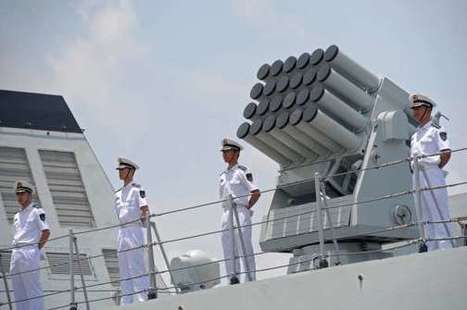

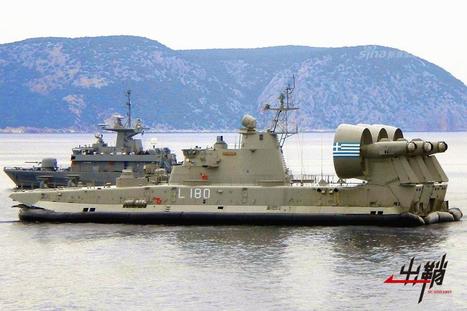


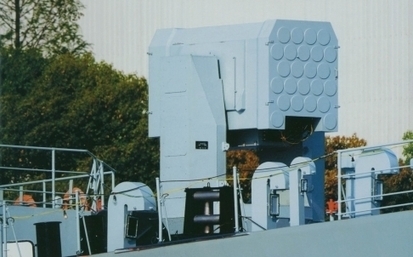

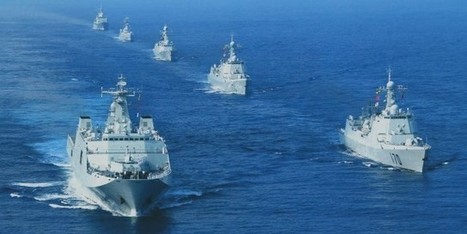
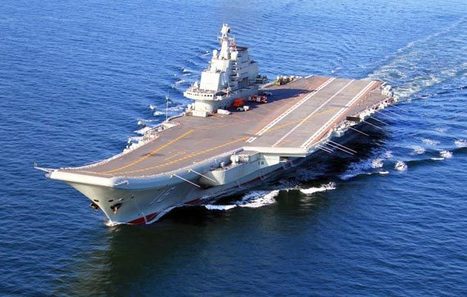
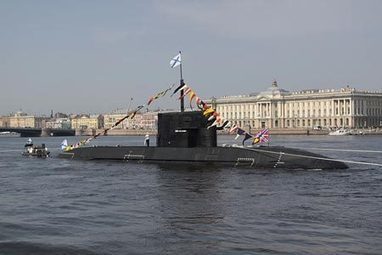
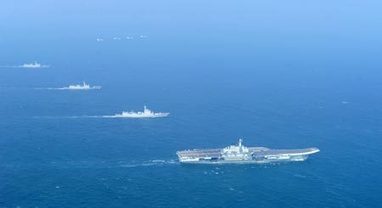
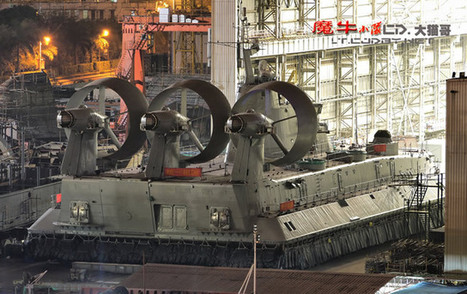
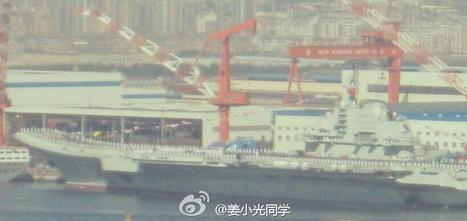
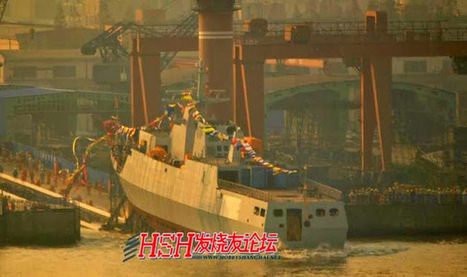


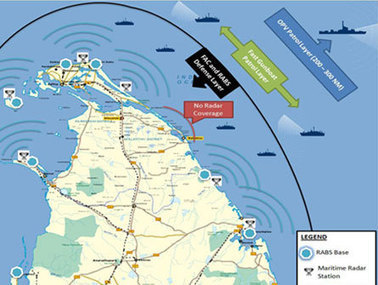

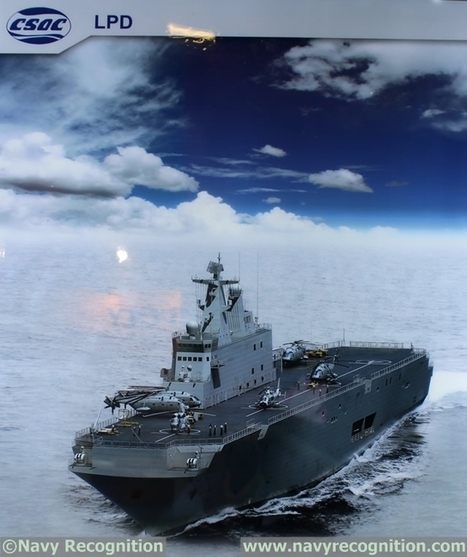



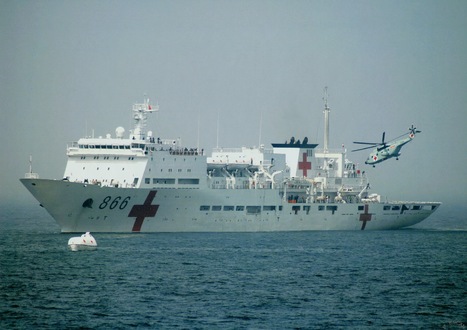

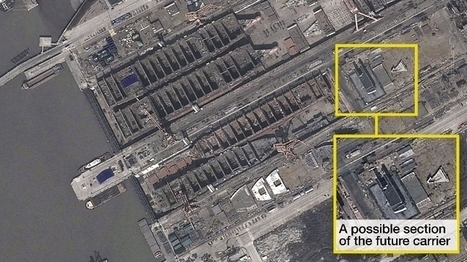


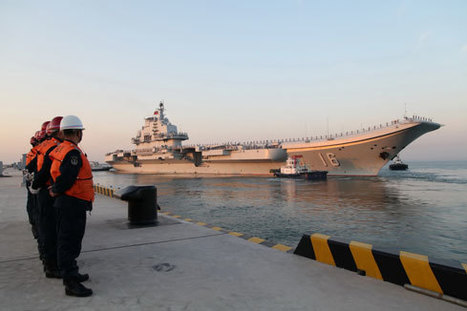
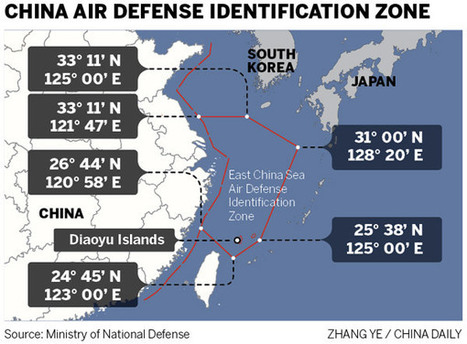





En novembre dernier, un projet de très grande ampleur pour la Chine en Océan Indien était évoqué :
http://sco.lt/7CsLLt